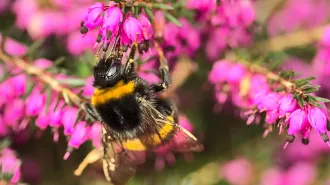From Snowbird, Utah, at a meeting of the Animal Behavior Society

Youth rules among groups of ring-tailed coatis of Argentina. A biologist reports a social hierarchy that he says hasn’t been previously documented in animals.
The ring-tailed coati belongs to the same family as raccoons. Although scientists named the species more than a hundred years ago, its ecology and behavior haven’t been studied well, says Ben Hirsch of State University of New York at Stony Brook. To fill in the gap, he has been monitoring two groups of coatis in Iguazu National Park.
Small, young coatis often spring at their elders, he says. Instead of smacking the pretentious youngsters, elders usually back down. As Hirsch worked out the dominance hierarchies, he found the sole adult male at the pinnacle of the group, which wasn’t a surprise. Next in rank, though, came youngsters less than a year old, who were lording it over all the adult females. Below these adult females were the adolescent coatis, between 1 and 2 years old. Thus, when those high-living juveniles reach their first birthdays, they plunge from near the top of the hierarchy all the way to the bottom, says Hirsch.






